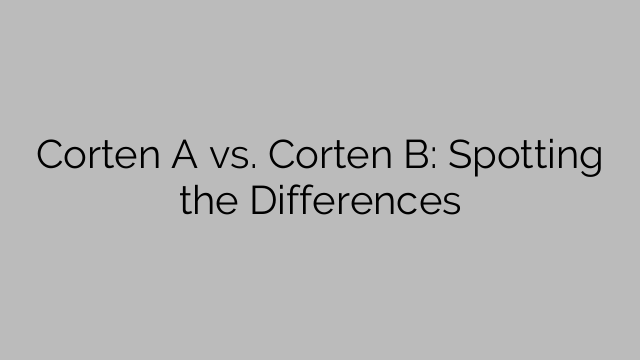The main distinction between Corten A and Corten B lies in their chemical composition. Corten A primarily consists of iron, copper, chromium, and nickel, with small amounts of phosphorus added. This composition provides improved corrosion resistance, making it ideal for outdoor structures exposed to harsh environmental conditions. Alternatively, the composition of Corten B features a higher concentration of phosphorus, which contributes to its superior mechanical properties. It offers enhanced tensile strength, allowing for increased structural stability.
When it comes to physical appearance, both Corten A and Corten B develop a reddish-brown patina over time due to the steel’s reaction to the elements. This natural rust-like color not only provides a beautiful aesthetic but also acts as a protective layer against further corrosion. However, Corten B tends to showcase a more pronounced color change than Corten A, promoting a deeper and richer patina. As a result, Corten B may be preferred for applications that prioritize a weathered and rustic appearance.
Another aspect to consider is the availability of sizes and dimensions. Corten A is more commonly available in the market, which means it may be easier to source and obtain for various projects. On the other hand, Corten B is more limited in supply, making it slightly less accessible. However, it is important to note that both types can be ordered and manufactured according to specific size requirements, ensuring a suitable solution for any project.
The choice between Corten A and Corten B ultimately depends on the intended application and desired characteristics for a particular project. If corrosion resistance is the primary concern, Corten A may be the more appropriate choice. Its chemical composition provides an excellent barrier against rust formation, making it highly durable in outdoor environments. On the other hand, if structural strength is of utmost importance, Corten B should be considered. Its higher phosphorus content contributes to increased tensile strength, allowing for greater load-bearing capabilities.
In summary, understanding the differences between Corten A and Corten B is crucial for making informed decisions regarding their usage. While Corten A offers superior corrosion resistance and widespread availability, Corten B boasts enhanced mechanical properties and a deeper, more prominent patina. By evaluating project requirements and considering these distinctions, one can confidently choose the appropriate corten steel type for optimal performance and aesthetics in a variety of applications.
[ad_2]

